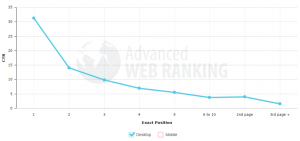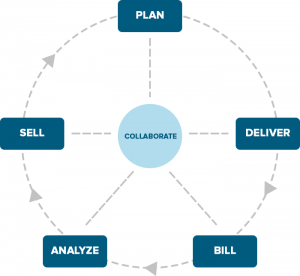Here’s a scary fact: 59% of entrepreneurs don’t believe social media is essential to their business. This comes from a survey published last year by an industry group called The Alternative Board (TAB).
Social media managers, on the other hand, know how vital platforms like Facebook, Instagram, and Twitter are for getting brands out there. This is why they work so hard at their job. The gap in understanding that often exists between the social pros and their clients can be bridged (and it must).
Great reporting is the smartest way to make sure clients always know what you’re doing, and why it’s essential.

Six Reasons Businesses Don’t Want Social
If the entrepreneurs in the TAB survey are anything to go by, your own clients might also not know why they’re paying you to do the amazing work you do. According to social media trainer and speaker Laurel Papworth, the six most common reasons businesses give for not needing social media are:
| 1 | We already know our customers |
| 2 | I prefer to talk to my customers in person |
| 3 | We don’t need new customers |
| 4 | Customers only complain online |
| 5 | Our customers aren’t online |
| 6 | We prefer to advertise in magazines or on TV |
You need to make sure not only new but also existing clients know why you’re doing what you do for them, and why you’re doing it a very specific way. The best way to do this is face to face, often.
Use Data To Tell A Bigger Story
A social media report is just a way of using data to tell a story. Whether you’re presenting a monthly report with key social metrics, a report following a campaign, or explaining insights from research into the brand and competitors, your message needs to use information to present the facts as clearly as possible.
Reporting can also tell the client a bigger story: why social media marketing matters.
Use monthly meetings to explain not only your strategy and its progress, but also to cover the meaning of the language around social media, trends, and anything else you think it’s important they know. That way you’ll make sure your clients are completely on board. Pre-empt any questions they might have, clearing up any possible misunderstandings before they happen.

How To Use Every Report To Say It All
There’s a chance that all of the people you’re presenting reports to don’t understand social media jargon and have limited or no knowledge of trends. Here’s how to explain the key metrics that are most misunderstood for monthly reporting:
1. VOLUME
Volume is deceptively simple. It tells you how big the size of the conversation about a brand or campaign is. In isolation, however, volume isn’t really a useful measure of success.
Explain that: to get a good indicator of volume it’s important to look at messages about a brand, as well as how many people are talking about a brand, over time. Platforms need to be covered individually and collectively, which can’t be done without social media analytics.

2. REACH
A large audience is good, but it isn’t everything. What matters is getting the right message to the right people, not the overall reach of a post or campaign.
Explain that: ‘reach’ means the number of people who have seen a post. When a post shows in a user’s newsfeed, that counts as reach. Reach is a measure of the potential size of an audience that has been reached, but it can’t be taken at face value and needs to be measured against other engagement metrics like clicks and retweets to make sense as part of the bigger picture.

3. ENGAGEMENT
If you work in social media you’ll know this is a number that really matters. Make sure your client understands your goals.
Explain that: engagement could mean interaction through replies or comments, or how well a message is being spread through retweets and posts. When you unpack the numbers in your report, unpack your focus at the same time.

4. INFLUENCE
You want to know who is talking about a brand and how much impact they have, but you need to be clear on what counts as ‘influence’.
Explain that: influence is a controversial metric and different people measure it in different ways. Whichever way you measure it, be clear about why you don’t simply rate influence based on following (just because somebody has a lot of followers, it doesn’t mean they can get their audience to do anything). Brand advocates should be chosen by focusing on people who amplify your message, not by focusing on follower count.

5. SHARE OF VOICE
How you’re measuring up against the competition is arguably the most important metric when it comes to demonstrating how well your social media strategy is working.
Explain that: You use very smart analytics tools that allow you to track performance across brands. TV and radio ads can’t do this. Knowing how your conversation appears online against other brands’ lets you find out how much industry conversation is focused on the client and measure competitors’ impact.

6. PLATFORMS
There’s a unique social media mix suited to each business, brand, or service. Social media teams know what this is because they’ve done careful research into brands, consumers, and competition.
Explain that: social media platforms have different uses and demographics, which do change over time, and that adopting new platforms or favoring some over others is not unusual – it’s ideal.

Make Your Reporting Even More Amazing
Take your social media reporting from effective to brilliantly convincing by following these pointers:
| Get to the point. Start your report with your main message – this might be something like ‘since campaign x our engagement has increased by 25%’. Put your main message on your very first slide, then use the rest of the report to go into detail – concisely, using short sections to explain key points. |
| Use your intro to go over your objectives, strategy, tactics and KPIs. Remember that not everyone in the meeting will know the details of your campaign. |
| Design matters. Tell your data’s story to your client using clean and clear graphs and charts to illustrate what you’re saying. Visually represented, numbers are far easier to understand. Always use colours specific to the brand so it’s clear that you’ve created a very personalized report. |
| Use quotes from real people and actual posts help to remind clients that the numbers you’re showing them represent the real consumer. Always include a screenshot or two so that they can put faces to names. |
| Include some research. Brands may not understand why their social team needs to tweak strategies. Changes in direction might seem haphazard if they’re not understood as essential responses to a fast-changing online landscape, so show your client the research behind your decisions. |
| Don’t overload the people you’re presenting to with too much information. Include an appendix if you need to. |
| Make it easy for the client by summarizing key learnings at the end of your report. |
Touch Base Often
Schedule in regular meetings with your client so that you can be sure to get the face time you need to present your reporting thoroughly. It’s good to email them reports for their records, but there’s a chance they might get lost in busy inboxes if you don’t see your client and speak with them in person. This meeting time is vital when it comes to unpacking the data – telling your story as clearly as possible and being there to answer any questions.
Ideally, you should meet with your client monthly for a roll-up report. This is a chance to give them an overview of performance over the last four weeks or so, and keep them up-to-date with any new developments in social that need to be taken into account. You can’t take for granted that your client would know about algorithm changes on Facebook or new features that other platforms might offer. Letting them know right away gives them a heads up on any changes you might be making to content or strategy now or in the near future.

The quarterly strategy review should never be missed. This is the time to explain not only how well you’ve been doing, but where you’ll be making any changes based on the client, consumer, competitors, or new research into social media. Great monthly reports make it that much easier to put together compelling quarterly reviews. All of the hard work you’ve put into those monthlies makes the quarterly far less daunting – you already have all of the information you need at hand pulled for previous reports.
Digital & Social Articles on Business 2 Community
If you present clear and beautiful reports to your client often, they will better understand why you do what you do for them, as well as how you do it. Good reporting wins clients, and keeps them.
(80)










